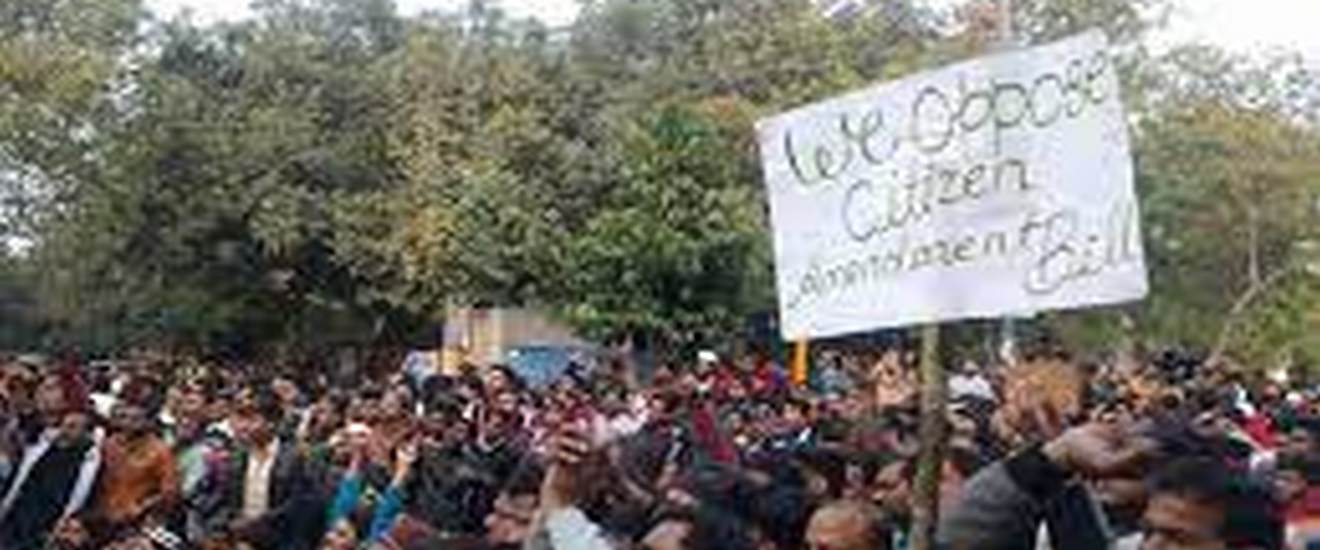Analysis
CAA contradicts Assam Accord?
Unions in Assam fear that CAA poses a threat to Assamese identity and contend that it conflicts with Assam Accord, 1985.

Last week, the Supreme Court turned its attention to the Citizenship (Amendment) Act, 2019 (‘CAA’) for the first time since January. In a brief hearing, it declined the Muslim Students Federation’s (‘MSF’) application to stay the operation of the CAA in Assam.
In this short post, we explore why Petitions such as the MSF’s are distinct from those which focus on the CAA at a national-level. As the All Assam Students Union (‘AASU’) explains in its CAA Petition, many Assamese fear that the CAA will result in a large influx of Bangladeshi migrants. The MSF, AASU and other Assamese Petitioners view such migration as an existential threat to Assam’s cultural identity.
What is the CAA?
In short, the CAA introduces a path to citizenship for illegal migrants from certain religious and national backgrounds. Its intended aim is to aid persons fleeing religious persecution.
It amends the Citizenship Act, 1955 so as to grant illegal migrants a path to Indian citizenship, if they (a) are Hindu, Sikh, Buddhist, Jain, Parsi or Christian AND (b) migrated from Afghanistan, Bangladesh or Pakistan.
The CAA doesn’t apply to tribal areas in Assam and other North Eastern States.
History of migration
Historically, many Assamese groups have strongly opposed migration, especially from Bangladesh (and former East Pakistan). As the AASU expresses in its Petition, indigenous Assamese view migration from Bangladesh as a demographic threat.
The origins of the conflict stem from mid-19th century British East India Company policies, including that of promoting Bengali in the lower levels of Assamese bureaucracy. Partition served as another catalyst, with the creation of East Pakistan resulting in a large influx of migrants into Assam.
However, the current conflict primarily revolves around the waves of migration that came with the 1971 Indo-Pakistani War. In the aftermath of the War, various Assamese groups began to protest for stricter citizenship laws. Leading this ‘Assam Movement’ was the AASU, which fought for amendments to the new legislation and a heavily fortified border with Bangladesh.
After 6 years of agitation, the Union Government acceded to the pressure and signed the Assam Accord with the State of Assam and various organizations in 1985. The Accord introduced an amendment to the Citizenship Act, 1955 which legislated that all persons who entered Assam after 24 March 1971 would be deported. Further, the Accord required the Union to secure Assam’s international borders.
While the Accord ended the 6-year long Assam Agitation, it remains a source of conflict within the State. Perhaps primarily so because it mandated an update of Assam’s National Register of Citizens (NRC). Assam’s NRC contains a list of Indian citizens residing in the State. Those whose names are excluded from the list face detention centres and deportation.
For nearly 30 years, the Government took no substantial steps towards updating the NRC. However, after Assam Public Works approached the Supreme Court, the update began in 2013. Finally, on 31 August 2019, the Government published the final list, excluding over 19 lakh residents.
As a result of the new NRC, questions over citizenship in Assam are currently fiercely contested. This is evidenced by the fact that there are a slew of cases relating to citizenship in Assam pending before the Supreme Court: Assam Public Works, Assam Sanmilita Mahasangha, All Assam Minority Students Union, etc.
Loss of identity
The AASU and MSF stress in their Petitions that they fear the CAA threatens Assamese identity. The CAA offers a path to citizenship for Bangladeshi migrants who would otherwise be excluded from the NRC, as long as they are not Muslim.
The AASU explains, ‘The result of the impugned Act will be that a large number of non-Indians, who have surreptitiously entered Assam after 25.03.1971, without possessions of valid passport, travel documents or other lawful authority to do so, will be able to take citizenship and reside therein’.
This feared new influx of migrants threatens to alter the demographics of Assam, the AASU and MSF contend. To drive home this point, the AASU and MSF recite the provisions of the United Nations Declaration on the Rights of Indigenous Peoples (‘UNDRIP’), which affirm indigenous peoples’ rights against forced assimilation and destruction of culture. They assert that the CAA will dilute Assamese culture by inalterably changing the State’s demographics.
Since India voted in favour of UNDRIP, they contend that the Government should strive to realize the Declaration’s provisions.
Conflict with Assam Accord
AASU and MSF’s primary legal challenge against the CAA is that it conflicts with the Assam Accord, 1985 and the amendments the Accord brought about to the Citizenship Act, 1955. In particular, they contend that Sections 2, 3, 5 and 6 of the CAA are inconsistent with Section 6A of the Citizenship Act.
The Amendment allows for persons declared ‘illegal migrants’ under the Assam Accord to remain in the State of Assam. As the AASU puts it, the CAA defeats the ‘entire object and purpose of Section 6A of the 1955 Act’.
Hence, the Petitioners pray for the Supreme Court to read down the CAA, insofar as it applies to Assam, and to direct the Union to ‘take effective steps’ to implement the Assam Accord.
While the Petitioners may have to wait longer than they would like for the Court’s verdict, they can expect the Court to appreciate the unique situation in Assam. In January, the Court agreed to hear the Assam petitions separately, signalling their appreciation of the distinct circumstances arising out of the Assam Accord and NRC.
We will be archiving the oral arguments once they resume.
